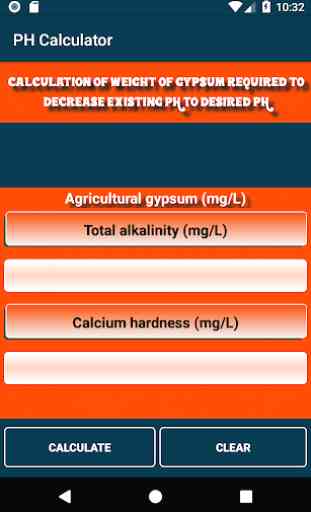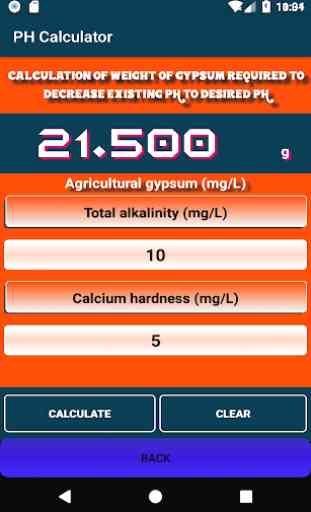PH Calculator
It aims to determine the amount of pH to increase or reduce the water, which are the result of interactions between the soil beneath a pond and the water used to fill it. Generally, ponds are commonly constructed on clay soil (often acidic) 2 types of soils, the effect on water quality can be significant. Ponds with acidic bottom soils that are filled with poorly mineralized water characteristically have low alkalinity and hardness. When total alkalinity and hardness are below 20 mg/L (as CaCO3) pH and productivity are usually reduced. Alkalinity concentrations below 20 mg/L often lead to large swings in daily pH values, which stress aquatic animals. Acidic soils contain high concentrations of hydrogen ions and/or aluminium relative to the concentrations of calcium and magnesium, which are important minerals for good water quality.
The acidity of pond soils can be neutralized and the productivity of the pond be improved by liming. ‘Liming’ refers to the application of various acid-neutralizing compounds of calcium, or calcium and magnesium. In general liming ponds has three important benefits – i) it may enhance the effect of fertilization, ii) it helps prevent wide swings in pH and iii) it also adds calcium and magnesium, which are important in anima; physiology.
The acidity of pond soils can be neutralized and the productivity of the pond be improved by liming. ‘Liming’ refers to the application of various acid-neutralizing compounds of calcium, or calcium and magnesium. In general liming ponds has three important benefits – i) it may enhance the effect of fertilization, ii) it helps prevent wide swings in pH and iii) it also adds calcium and magnesium, which are important in anima; physiology.
Category : Education

Related searches




